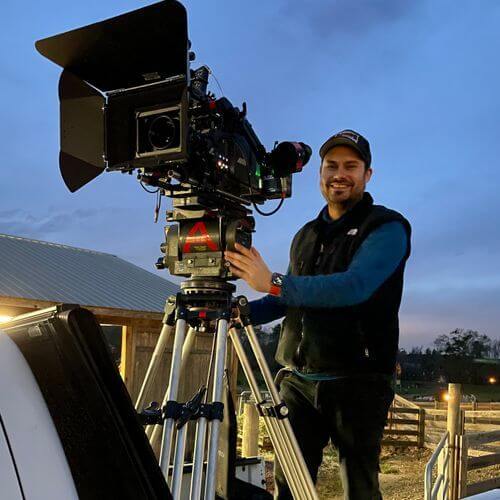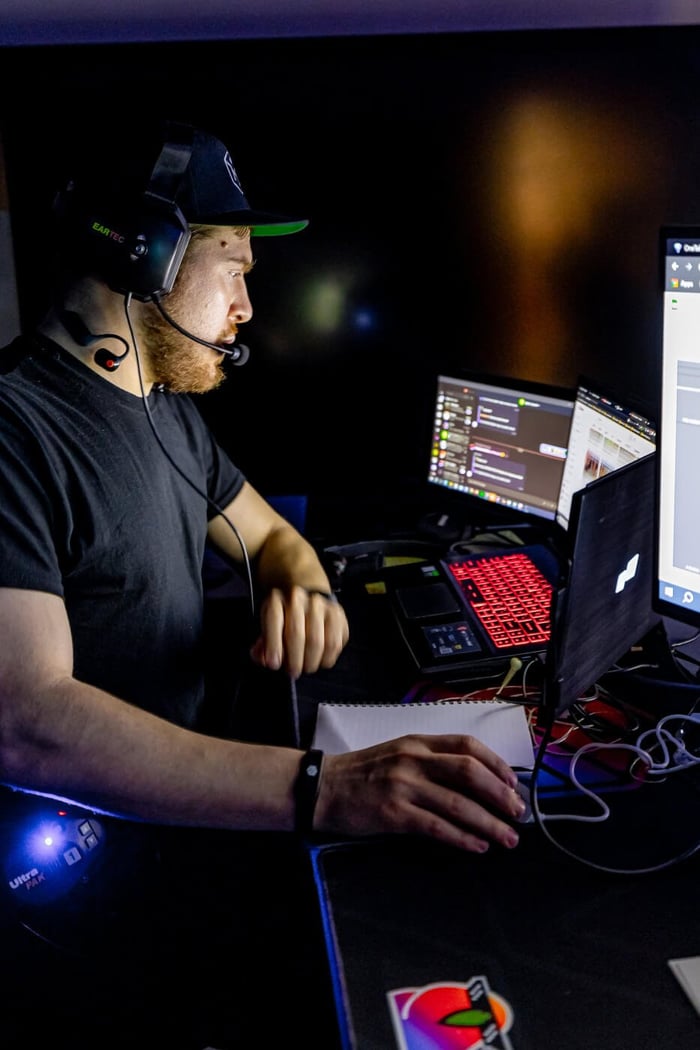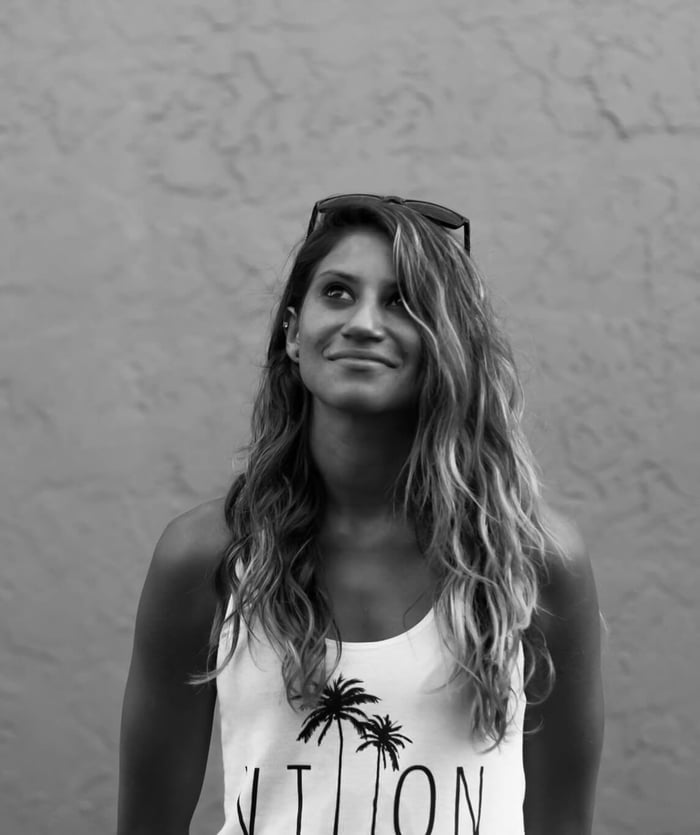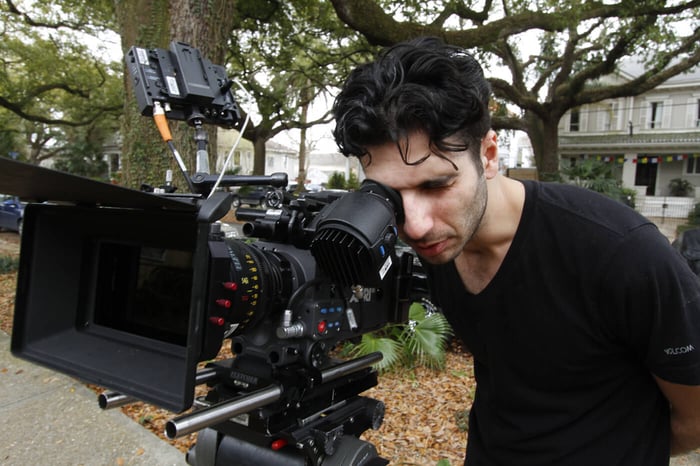For the June edition of our Creator Spotlight series, we talk to Nate Glass - a cinematographer, producer and the founder of Solis Films. Once again, we have another incredible member of our community sharing their story and insights about the industry... enjoy!
Alright Nate, for those that are unfamiliar with your work - please introduce yourself.
Hey I’m Nate Glass, a Producer/Cinematographer and the founder of Solis Films. I have a very technical focus and thrive when I’m problem solving unique creative asks. Our clients use us for expertise in high energy events, commercials, sports, and cinematic multi-cam capture. We are constantly developing original content including feature films, documentaries, and tv shows.
I got into film because I loved how much it required collaboration; the thrill of working with other creatives to find the perfect visual or tug at the right heartstring is the dream, but I’m most passionate about storytelling and finding the humanness all around us - empathy is so key to finding joy.

Talk to us about the beginnings of your career and how you got started.
As a kid we didn’t watch movies. At least not modern big budget blockbusters. We watched mainly low budget Christian films and really old classics, but even from an early age I was captivated by the screen and the desire to figure out how they made that. My cousin and I started making movies together at a very young age. We’d get our siblings to dress up and play roles while we would film and edit. Productions often never finished cause our cast would get bored and leave the set, but we had a blast.
After a semester of pre-med, I switched to studying film at Asbury University in Kentucky, where I had incredible professors and experiences with friends I’m still working with to this day. We had a real independent filmmaker spirit and I had been First AD on two feature films by graduation. After graduating, I was able to go straight into freelancing at the London Olympics and working on different indie films and small commercials around KY.
In 2012, I produced and DP’d my first feature film, As It Is in Heaven, directed by Joshua Overbay for $20k, which later went on to be recognized by the New York Times as a Critics Pick for the year.
From that experience, we launched Solis Films in 2016, with the goal of producing more original content and taking on unique and creative clients. Later that year we completed our second feature film together, Luke and Jo.
Solis Films relaunched in 2020 with three key pillars - live, brand and original content, allowing it to focus more on client work focusing on commercials, sports, and corporate content, while still maintaining the passion for original content.
Currently, we are producing a narrative feature film titled “Whistle Down Wind" and a documentary “Stitching Strength” that are both going through principal photography this summer, and many more in development and scheduling.

Can you tell us about your earliest influences, and some of the people that inspire you today?
Ed Catmull of Pixar has been very formative for me in regards to the creative process and how to really find ways to pursue excellence in ways that allow many voices to contribute. His principles of clear communication while holding to honesty in feedback, really inspired me to find ways to challenge myself and others to create beyond the limitations we perceived were in front of us.
How has technology affected your career? Does anything in particular excite you about where technology's going right now?
As filmmakers we are constantly embracing the veil between technology and storytelling. Some things are never going to change. Human stories are the best stories. We learn to live and love vicariously through stories as simple as a few words on paper.
But I also have a deep love for technology and love finding new ways to bring emerging tools into my productions that can elevate them and maybe give an audience a new perspective on the world.
My newest passion is Unreal Engine. It’s an incredible tool, because you can use it for so many parts of the process from creating compelling pre-visualization all the way through to production on virtual production stages or creating fully embodied animation. Having the ability to pre-test lighting and camera angles before I ever walk on set gives me precious time I would never have to experiment with while also being able to share visuals with my team...
Can you tell us about a time having a data storage strategy prevented you from losing important work?
We manage a magnitude of projects with multiple cameras and recording devices with extremely compressed post timelines - so it is imperative we have to go into every project with a very clear data storage strategy that will be able to work efficiently on set, provide reliable backup security, and establish strong data organization to carry projects through post production. For Solis, choosing the right solutions for each project depends on identifying the needs clearly and we love that Glyph offers so many different variable solutions that we know we can trust to be reliable and speedy.

Can you tell us about how you utilize Glyph products in your workflow?
At the end of the day, every project we do no matter how big or small ends up as data. All of the hard work and intense creativity distilled down to ones and zeros that can be extremely fragile. If you’ve worked in the industry long enough, you know the pain that comes from losing that data either due to faulty equipment or just not having enough speed or space to back everything up. I love using our Glyph drives because we know we can rest easy once the footage is safely there.
We are using Glyph Raid Systems for our feature film Whistle Down Wind right now, and the DIT team has been very positive about the speed and reliability.

Can you walk us through a typical day of work?
I can’t remember the last time I had a typical day of work. I find myself in a wide variety of projects of all different shapes and sizes.
Most of my days include a combination of pre-production and working with my team to make sure all of our clients' needs are being handled efficiently and excellently.
I’m often on set producing and DPing, working in unreal engine doing pre-vis and animation, or tech directing a live show.
Every day is so different and I love that.

How do you stay inspired and motivated creatively?
I’m currently on set for a feature film that one of my best friends, Andie Morgenlander, co-wrote and is directing. We are collaborating with faculty and students from Western Carolina University to tell a queer love story, titled Whistle Down Wind.
It’s really exciting to be getting to focus on something that is very creatively freeing while also getting to mentor and teach. We’ve developed some really cool visual aesthetics with prisms and light refraction that will give the film a really unique look.

Can you touch on some of your more recent career highlights? What were some of the most gratifying moments of your career?
We just completed a project with Paramount+ and the National Park Foundation where for seven days in seven parks we streamed nature from sunrise to sunset in honor of Earth Day. The project allowed us to dream big and do our best technical problem solving as we had to keep the stream live for 14+ hours in remote locations without infrastructure i.e. power. We used a combination of Starlink custom cloud based processing to reliably transport the signal to Master Control and powered the entire production from a series of solar panels and batteries.

Every little detail had to be carefully designed down to mapping out the sun positions and calculating exposure settings throughout the day to maintain a consistent unbroken live event that could also translate into multiple different post deliverables.

Can you tell us about a project that was particularly challenging? How did you overcome those obstacles?
We worked with the Drone Racing League as their Specialties Unit for three seasons. We had a multitude of different aspects that we had to manage including pre-season media day as well as embedding into each event to capture, slow motion, aerials, EPK, interviews, timelapses, and really anything that didn’t fit into the traditional broadcast scope.
We had to build a diverse and skilled team while maintaining a crucial schedule tied to the cadence of the sport.
When the pandemic was in full swing, we worked with DRL to completely virtualize the production. Sending out studios to 15 remote contributors including commentators and pilots and interfacing with a distributed crew across the world. Using their physics accurate simulator, the racing was able to go on via a streaming backbone we built on AWS.

What are three products you couldn’t work without?
1) Prusa 3D Printer - I use this to print everything from replacement parts, production gadgets, and organizational items to toys for our cat.
2) Innovativ Camera Cart - I fly all over with gear and this cart not only flies along with me, but expands to be a great mobile workstation for whatever we are doing.
3) My Computer - I mean I literally couldn't work without it. But we have a lot of different computers and it’s hard to pick a favorite.
If you could go back in time and give your younger self advice when you were first starting out your career, what would you say?
Find people to challenge yourself with. I have been so blessed in my life to be able to have great friends who also are passionate about their craft and art. For me collaboration and creative fulfillment is the fuel to drive, but the joy comes from doing it with friends.
Thanks for sharing, Nate. We're excited to check out Whistle Down Wind, and see what else you have in store!





